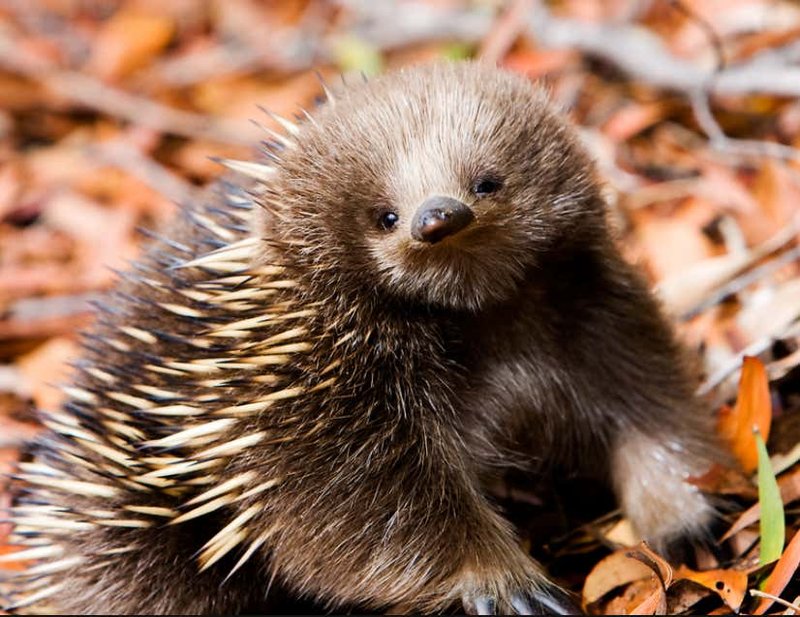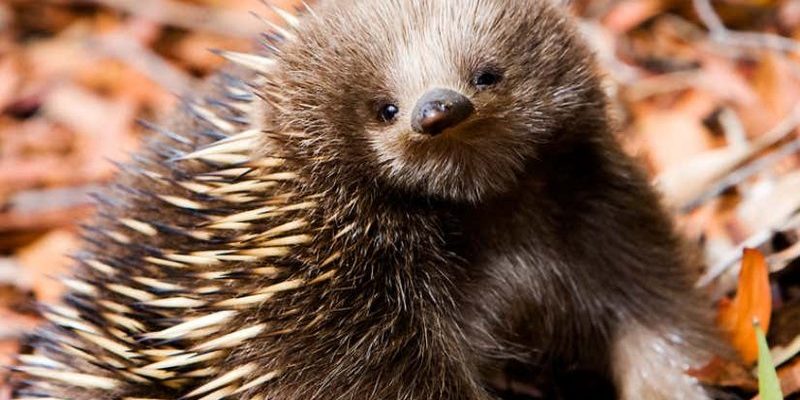
Just like a puzzle missing a few pieces, the echidna’s future is uncertain. Its survival depends on factors like habitat loss, climate change, and human activities. As we sip our coffee and chat about the future of this adorable spiky friend, let’s dive deeper into its status and the conservation efforts aimed at protecting it.
What is the Echidna?
Echidnas are fascinating creatures that belong to the monotreme family, which also includes the platypus. They have spiky fur and a long snout, making them look quite distinct. There are four recognized species of echidna, with the most common being the short-beaked echidna. This little guy is known for its adaptability and can be found across Australia and New Guinea, hanging out in forests, grasslands, and even deserts.
An interesting fact about echidnas is that they are endothermic, meaning they can regulate their body temperature, unlike many other reptiles. They don’t hibernate but can enter a state of torpor when temperatures drop or during a food shortage. Echidnas primarily feast on ants, termites, and other small invertebrates, using their sticky tongues to catch their prey. Just imagine a tiny, spiky creature hunting for ants like a little furry vacuum cleaner!
Current Status: Are Echidnas Endangered?
The short answer is: no, short-beaked echidnas are not currently classified as endangered. According to the International Union for Conservation of Nature (IUCN), they are listed as “Least Concern.” This means their populations are relatively stable and widespread. However, this doesn’t mean they are free from threats.
Even with a stable population, echidnas face various challenges. Habitat destruction, particularly due to urbanization and agricultural expansion, puts pressure on their natural homes. Climate change also plays a significant role, affecting food availability and breeding patterns. As we move forward, it’s crucial to monitor these factors closely to ensure echidnas continue to thrive.
Threats to Echidna Populations
While the short-beaked echidna isn’t currently endangered, several threats could change that. Understanding these threats helps us realize why conservation efforts are vital. Here are some of the main dangers they face:
- Habitat Loss: As humans expand into natural areas, we encroach on echidna habitats. Urban development, deforestation, and agriculture can limit their living spaces.
- Climate Change: Shifts in temperature and rainfall patterns can affect food availability. Extreme weather events can also disrupt breeding and survival rates.
- Predation: Invasive species like foxes and feral cats pose significant risks to echidna populations, especially for young and vulnerable individuals.
- Disease: Just like humans, echidnas can suffer from diseases that spread through populations, impacting their survival.
You might be wondering how these threats can escalate quickly. Think of it like a game of Jenga: remove too many blocks (habitats or food sources), and the tower (population) may topple. Conservationists are continuously working to prevent this by raising awareness and implementing protective measures.
Global Conservation Efforts for Echidnas
Various organizations and conservationists are working hard to protect echidnas and their habitats. These efforts range from habitat restoration to research initiatives that aim to understand echidna populations better. Here are some key conservation efforts:
- Habitat Restoration: Programs are underway to restore degraded habitats, ensuring that echidnas have enough space and resources to thrive.
- Research: Scientists study the behavior and ecology of echidnas to better understand their needs and how to safeguard them effectively.
- Public Awareness: Campaigns aim to educate the public about the importance of echidnas and the need for conservation efforts.
These initiatives are crucial for ensuring that populations remain stable and that future generations can enjoy seeing echidnas in their natural habitat.
The Role of Local Communities in Conservation
Local communities play a significant role in conservation efforts for echidnas. Engaging communities can lead to grassroots movements that protect wildlife and habitats. Many communities are becoming involved in:
- Monitoring Programs: Locals can help track echidna sightings and contribute valuable data to researchers.
- Habitat Protection: Communities often advocate for protected areas and work with local governments to preserve natural spaces.
- Education: By spreading awareness about the importance of echidnas, communities can inspire others to care about their conservation.
When people feel connected to their local wildlife, they are more likely to support conservation efforts. It’s like having a neighborhood watch for wildlife; the more eyes on the ground, the better!
How You Can Help Echidnas
You may not be a wildlife expert, but there are simple steps you can take to help echidnas. Getting involved starts right at home. Here are some actionable ways you can contribute:
- Support Conservation Groups: Consider donating or volunteering with organizations that focus on echidna preservation.
- Reduce Plastic Use: Keeping our environment clean helps all wildlife. Less pollution means healthier habitats.
- Spread the Word: Talk about echidnas! Share what you’ve learned, and encourage others to take an interest in wildlife conservation.
Every small action counts—think of it as adding another piece to the jigsaw puzzle of conservation. Together, these pieces can create a bigger picture of a thriving ecosystem.
While the short-beaked echidna is not currently endangered, its future remains delicate. With habitat loss, climate change, and predation posing significant threats, it’s essential to remain vigilant and proactive. The actions of researchers, conservation groups, and local communities play a critical role in ensuring we continue to have this unique species in our world.
So, next time you enjoy your coffee, take a moment to think about the echidna. These remarkable creatures deserve our attention and protection. By staying informed and involved, we can help secure a future where echidnas thrive alongside us in the beautiful tapestry of nature.

